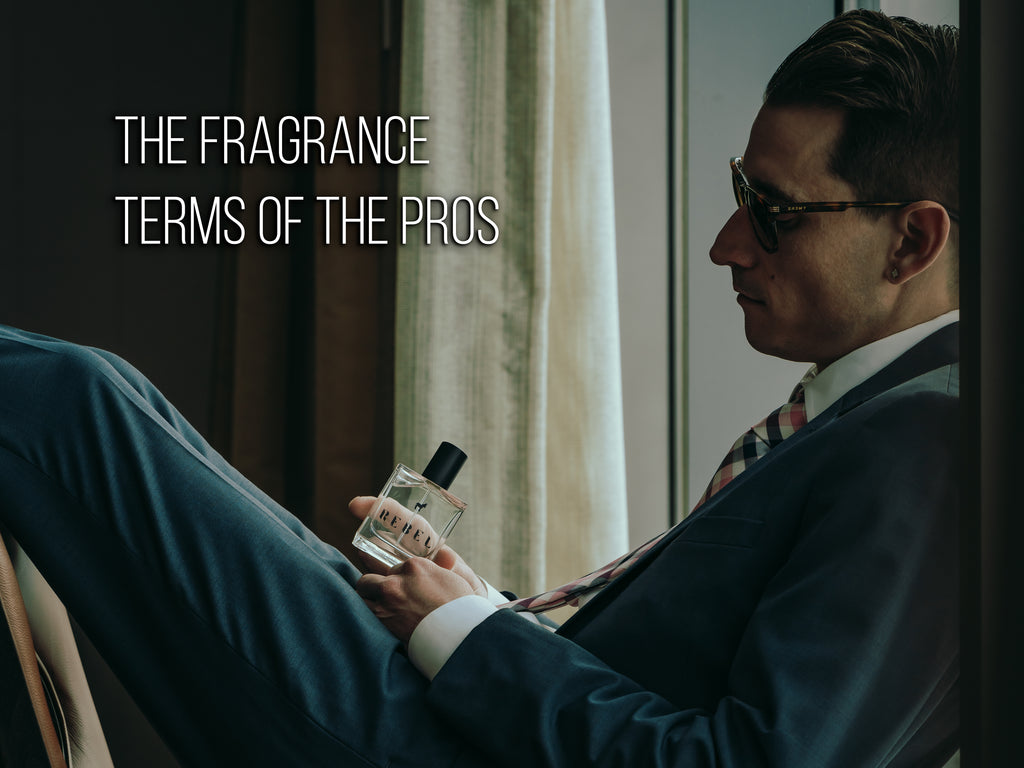What Is An EDP And Other Fragrance Terms To Know
Eau De What? We've been there too...
Here’s the deal gents, all colognes are not the same power. In fact, your cologne probably isn’t even a cologne technically. To the fragrance gurus they would call it a fragrance or scent. Cologne is essentially just a certain power level of fragrance.
Every fragrance has a different scent power that makes it last shorter/longer depending on the type. This has all to do with the concentration of oils to alcohol ratio in your scent. Our fragrances and most higher end fragrances are usually an EDP. The EDP level doesn’t mean it simply smells amazing (that has to do with the notes). The EDP will tell you likely how long the cologne should linger on you for.
All scents are classified by their concentration percentage. This is the ratio of oils to water/alcohol present in the solution. Understanding this concentration allows you to not only choose a scent but also gives you an idea of how much to apply. All fragrances are categorized into these five concentrations:
- Eau De Perfume – These are concentrations of 20-30%, and yes, they are very strong. These are mostly women’s fragrances, and if they’re not, they can be pretty overpowering. It’s probably best to just leave these alone.
- Eau de Parfum (EDP) – EDP’s are concentrations of 15-20%, typically around 15%. These are the strongest scents with a much longer shelf life. For most guys, this is the comfort zone. If you don’t know where to start, a good EDP is always a solid choice.
- Eau de Toilette (EDT) – EDT’s are concentrations of 5-15%, typically 10%. These are subtler scents with shelf lives of up to 5 hours after application.
- Eau de Cologne (EDC) – EDC’s are concentrations of 2-4%, typically 5%. These scents are very weak. Typically, a person would have to be drastically close to you to even detect it, if applied properly of course.
- Eau Fraiche (Aftershave) – these have concentrations of 1-3%. These scents are the weakest with shelf lives of less than an hour after application.

Other Fragrance Terms To Know
Notes - Essentially notes are just the different scents a fragrance gives off. Each fragrance holds three types of notes:- Top Notes – These are the scents present immediately upon application. They are usually very strong at first, but are meant to age over the course of the day to become wonderfully aromatic, usually taking about 30 minutes to dissipate to proper levels.
- Middle Notes (Heart) – These notes emerge just prior to the dissipation of top notes. They mask any unpleasant initial impressions of top notes which settle over time.
- Base Notes – These notes are reflective of the main theme of the scent. These are considered the most important notes when choosing a scent. They will be the most dominate oils, and therefore the most noticeable.
Tone - of a fragrance is the underlying smells that combine to make up the final theme. Let’s put that in context, think of cooking a meal. If the notes were the ingredients, the tone would be the final dish. Determining the correct tone of the scent is crucial in deciding the scent category for the fragrance.
Depth - is the ability of the fragrance to hold its tones throughout all three note phases. Depth is a great indicator of high-quality fragrance, one which typically requires fewer sprays at application and maintains its amazing scent throughout the entire application life.
Dry Down - As layers of the cologne give way with one another, oils will interact with your specific body chemistry personalizing the scent. Meaning, it will smell slightly different from person to person. This is referred to as the dry down scent, and it’s what makes all fragrances slightly unique to you. Usually the dry down scent is also the longest lasting. Therefore, it’s not only important to find a fragrance that smells amazing, but also one that smells amazing on you.
Projection - refers to the radius around a person needed to be within to pick up the scent of their fragrance. Now this can be greatly affected by the amount of fragrance applied and whether the pulse points were hit. A good rule of thumb is the three foot rule. You don't want to be noticed from across the room, but you also don't want someone to have to be right on top of you to catch a whiff. Find a combination of number of sprays and pulse points to hit that let's people know you're wearing a fragrance, without being overbearing or unnoticeable.
Accord - is a blend of notes that combine to form their own distinctive smell. Accords are often created to represent scents that can’t actually be distilled. For example, there’s no way distilling leather will give you a leather scent. We’re actually terrified of what that would smell like. In this situation, a blend of scents is required to recreate that smell.
The Fragrance Wheel - In 1983 Michael Edwards, the "perfume experts' expert," developed a fragrance classification chart in the form of a wheel. This chart categorized fragrances into four groups: floral, oriental, fresh, and woody. Among those categories are numerous subgroups, far to many to list here, but just knowing these four basic groups will give you a leg up on the competition.
- Floral – This one is pretty self-explanatory, it smells like flowers (but still can very much so be manly)
- Oriental – Mixtures of spices and vanilla give these scents a resin-like aroma.
- Fresh – From lavender, to herbs, to citrus, these scents are bright and airy giving you a “fresh out of the shower” scent.
- Woodsy – Moss, fir, and forest aromas, these scents give you that “man’s man” aroma.
- Patchouli - bushy herb that has a musky yet earthy odor. It's sweet and smells like a lot like damp soil, giving off that clean "morning dew" scent, combined with oaky moss.
Ozone - refers to aromatic compounds that have a distinctive odor reminiscent of fresh air, similar to that of morning rain. A nice, clean scent, giving you that fresh out of the shower smell.
Musk - Originally extracted from animals including a specific type of deer, musks are now almost exclusively synthetic. They feature a strongly animalistic character but can sometimes be sourced from plants such as labdanum. Musks are often found in the fragrance's base and are used to extend it's life. If you're looking for that "manly" scent, something with a nice musk is a great place to start.
Amber - A musky scent developed by using plant extracts such as wood or resin, Amber is often found in a fragrance's base, and is primarily in Oriental fragrances.
Aldehydes - These are organic compounds present in many natural materials that can also be synthesized artificially. It just means it’s a scent that was reproduced, which isn’t always bad. Aldehydes are typically used when extracting the compound is less cost effective than synthesizing, which keeps the cost low. Most famously, Chanel No. 5 is an aldehydic-floral perfume.
Gourmand - A "gourmand" fragrance is one that contains a notable amount of food-based scents. These fragrances are especially important to blend properly with your specific body scent and oil profile. If not executed correctly, these scents can go south on you quickly.
Fougere - is used to describe fragrances with earthy, fern-like notes. These types of fragrances generally have flowery or fresh tones, making them ideal for warmer summer and early fall months. One can generally find ingredients like lavender or pine in fougere fragrances.
Evanescent - This term is used to describe a note or fragrance that vanishes quickly. In essence, it’s a fancy way of saying it doesn’t last long. If you see this on the bottle, save your cash, and put it back on the shelf.
Absolute - An absolute is a highly-concentrated fragrance oil similar to an essential oil, but produced via solvent extraction. Absolutes are key ingredients in producing a fragrance. The low-temperature methods used to produce them are often the only effective way to capture the natural fragrant compounds of fragile materials (like jasmine or tuberose) that can't hold up to steam distillation.
You Might Also Want To Check Out:
Top 5 Fragrance Wearing Tips For Men
← Older Post Newer Post →












